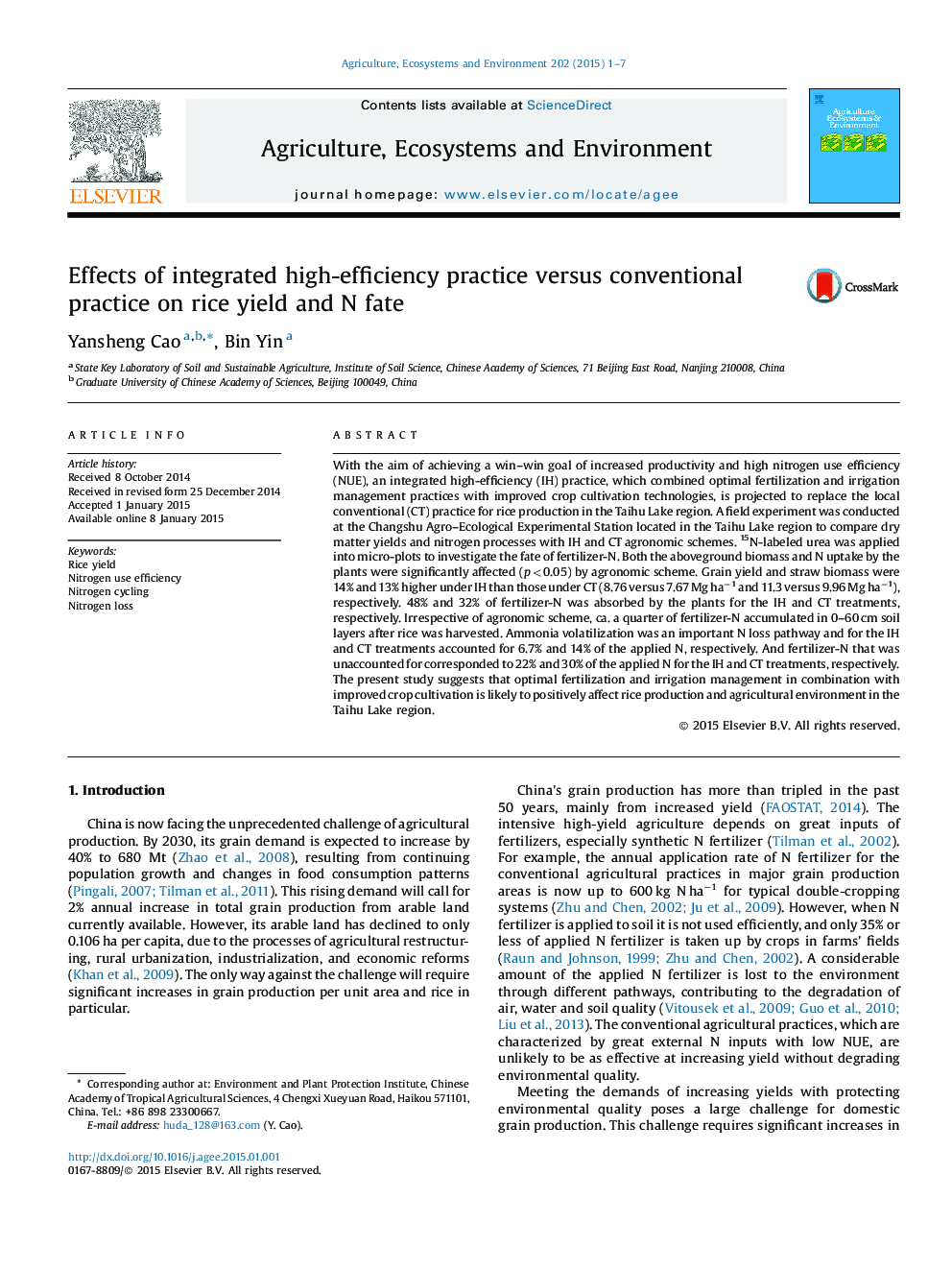| Article ID | Journal | Published Year | Pages | File Type |
|---|---|---|---|---|
| 2413756 | Agriculture, Ecosystems & Environment | 2015 | 7 Pages |
•Our study addresses the effects of an integrated high-efficiency practice.•The integrated high-efficiency practice positively affects grain production.•The integrated high-efficiency practice positively affects N cycling.
With the aim of achieving a win–win goal of increased productivity and high nitrogen use efficiency (NUE), an integrated high-efficiency (IH) practice, which combined optimal fertilization and irrigation management practices with improved crop cultivation technologies, is projected to replace the local conventional (CT) practice for rice production in the Taihu Lake region. A field experiment was conducted at the Changshu Agro–Ecological Experimental Station located in the Taihu Lake region to compare dry matter yields and nitrogen processes with IH and CT agronomic schemes. 15N-labeled urea was applied into micro-plots to investigate the fate of fertilizer-N. Both the aboveground biomass and N uptake by the plants were significantly affected (p < 0.05) by agronomic scheme. Grain yield and straw biomass were 14% and 13% higher under IH than those under CT (8.76 versus 7.67 Mg ha−1 and 11.3 versus 9.96 Mg ha−1), respectively. 48% and 32% of fertilizer-N was absorbed by the plants for the IH and CT treatments, respectively. Irrespective of agronomic scheme, ca. a quarter of fertilizer-N accumulated in 0–60 cm soil layers after rice was harvested. Ammonia volatilization was an important N loss pathway and for the IH and CT treatments accounted for 6.7% and 14% of the applied N, respectively. And fertilizer-N that was unaccounted for corresponded to 22% and 30% of the applied N for the IH and CT treatments, respectively. The present study suggests that optimal fertilization and irrigation management in combination with improved crop cultivation is likely to positively affect rice production and agricultural environment in the Taihu Lake region.
